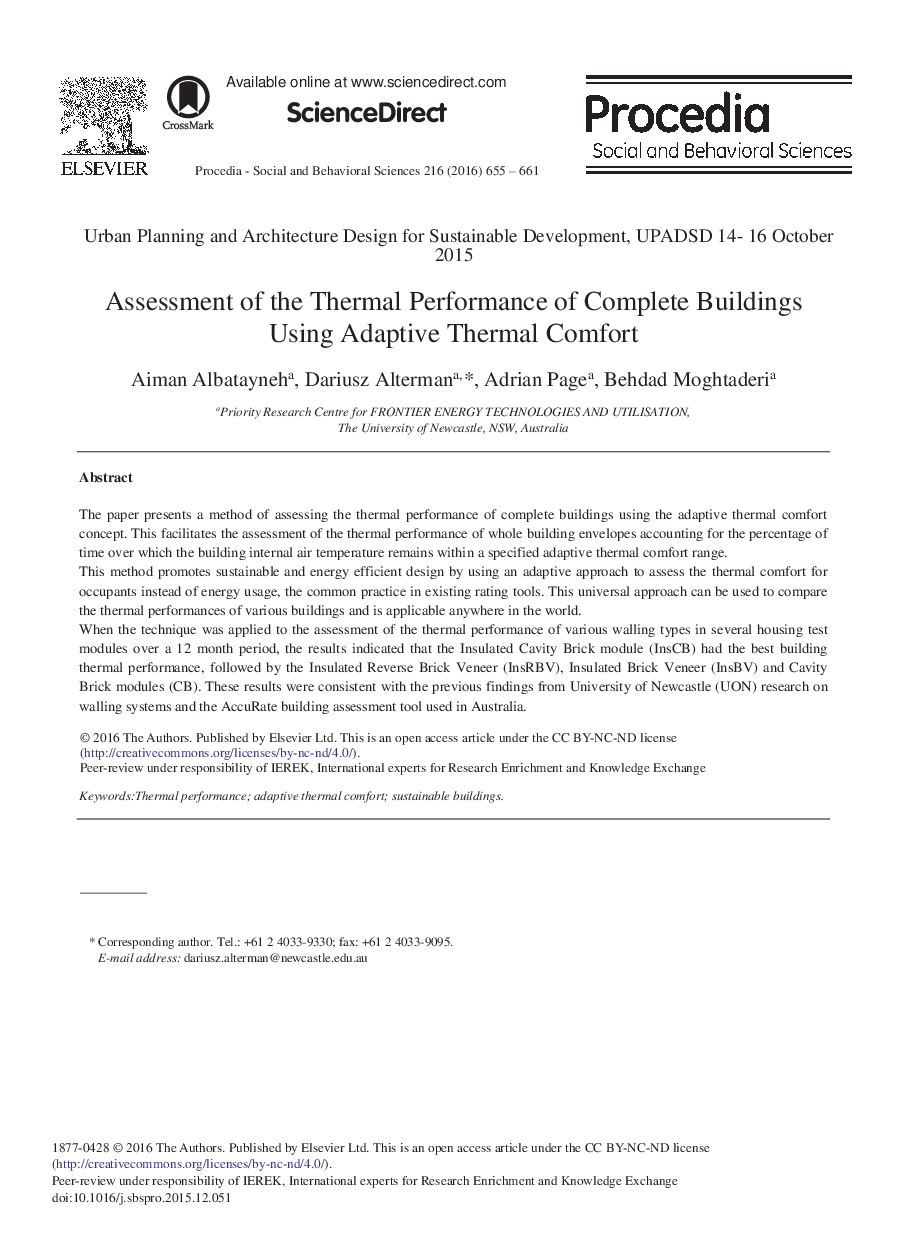| Article ID | Journal | Published Year | Pages | File Type |
|---|---|---|---|---|
| 1108771 | Procedia - Social and Behavioral Sciences | 2016 | 7 Pages |
The paper presents a method of assessing the thermal performance of complete buildings using the adaptive thermal comfort concept. This facilitates the assessment of the thermal performance of whole building envelopes accounting for the percentage of time over which the building internal air temperature remains within a specified adaptive thermal comfort range.This method promotes sustainable and energy efficient design by using an adaptive approach to assess the thermal comfort for occupants instead of energy usage, the common practice in existing rating tools. This universal approach can be used to compare the thermal performances of various buildings and is applicable anywhere in the world.When the technique was applied to the assessment of the thermal performance of various walling types in several housing test modules over a 12 month period, the results indicated that the Insulated Cavity Brick module (InsCB) had the best building thermal performance, followed by the Insulated Reverse Brick Veneer (InsRBV), Insulated Brick Veneer (InsBV) and Cavity Brick modules (CB). These results were consistent with the previous findings from University of Newcastle (UON) research on walling systems and the AccuRate building assessment tool used in Australia.
